
Modern Indian Paintings 1978
Complete Set of 4 nos of commemorative postage stamps on the paintings done by modern painters of India : Jamini Roy, Sailoz Mookherjea, Rabindranath Tagore and Amrita Sher–Gil :

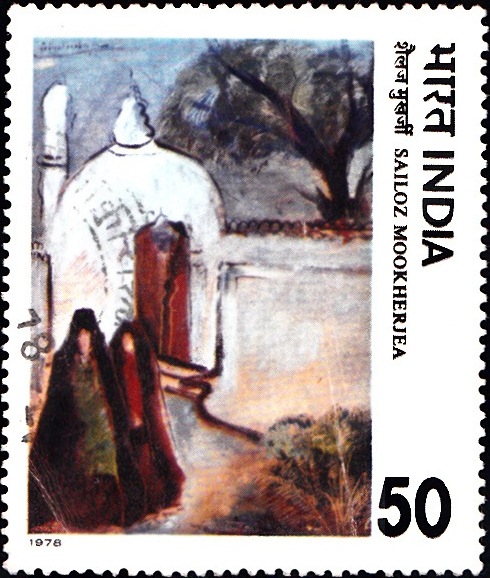

 Issued by India
Issued by India
Issued on Mar 23, 1978
Issued for : The Indian Posts and Telegraphs Department is happy to bring out a series of four special postage stamps on Modern Indian Paintings.
Description of Design :
The paintings depicted are :–
(1) “Two Vaishnavas“ by Jamini Roy (25 P)
(2) “The Mosque“ by Sailoz Mookherjea (50 P)
(3) “Head“ by Rabindranath Tagore (100 P)
(4) “Hill Women“ by Amrita Sher Gil (200 P)
The design of the First Day Cover depicts the painting titled ‘Words and Symbols‘ by K.C.S. Panicker. (Courtesy: National Gallery of Modern Art.)
Type : Stamps, Postal Used
Colour : Multicolour
Denomination : 25, 50, 100 & 200 Paise
Overall size : 4.82 x 4.06 cms.
Printing size : 4.44 x 3.66 cms.
Perforation : 14 x 14
Watermark : Unwatermarked paper
Number printed :
25 P. : 50,00,000
50 P. : 30,00,000
100 P. : 20,00,000
200 P. : 20,00,000
Number per issue sheet : 50
Printing Process : Photogravure
Designed and printed at : India Security Press
About :
- Against the background of over 5,000 years of Indian artistic tradition, the history of contemporary Indian art may seem but a fraction. Nonetheless, its development is spectacular despite many vicissitudes. It is generally accepted that the image of contemporary Indian art has substantially acquired its characteristics during the post-Independence period, although one may trace its origin to the earlier years of the century against the chequered backdrop of Abanindranath Tagore and the Indian renaissance, Ravi Varma and his like – the academic realists in the Western manner – and the Company School which filled the scene following the decline of the Indian miniature tradition.
- Contemporary Indian art is distinguished by a plurality of expression that may baffle one initially, but will sort itself out with familiarity and careful study. Basically, the contemporary Indian artist shares the tremendous spirit of adventure and freedom of artistic expression with his counterparts the world over and with this an eclectic approach to technical problems and the high degree of individualism which is perhaps the most significant gift of the modern age.
- The pioneers such as Rabindranath Tagore, Abanindranath Tagore, Nandalal Bose, Jamini Roy, and Amrita Sher Gil are already legend. Those who have come after them and who have made a significant contribution are not numerous, but quite substantial. The search and experiment is still on. And there is more than a sign of the coming of age of the contemporary artist.
- Jamini Roy (1887-1972)
- He was born in 1887 in Bankura district, West Bengal. He joined the Government School of Arts and Crafts, Calcutta in 1903. Jamini Roy was awarded Padma Bhushan in 1955 and became Fellow of the Lalit Kala Akademi in 1956. He received Hon. D. Litt. in 1967. Jamini Roy is quite a phenomenon in contemporary Indian art. He will always be remembered for his outstanding contribution as an artist who gave not only a new life in his work to folk and indigenous arts but inspired several artists to take a deeper interest in the unsophisticated people and their art. His own work is exemplary in this regard has earned for him the position of a pioneer. He died in 1972.
- Sailoz Mookherjea (1907-1960)
- He studied art in Calcutta and had his first One-Man Show in 1937. Sailoz Mookherjea travelled in Europe in 1937-38, after on, in Sikkim and Tibet. He came to Delhi in 1945. Sailoz exhibited extensively winning several awards and prizes. Both as a painter and as a man he won the heart of many an artist and became a father figure. His work was deeply inspired by people and the environment. Despite his eclecticism, he always remained at once both personal and universal.
- Amrita Sher Gil (1913-1941)
- Amrita Sher Gil was born of a Hungarian mother and Indian father. She was educated in India till she left for Paris in 1929 and joined the Ecole Nationale des Beaux Arts. She was deeply stirred by the Post-Impressionist Cezanne and Gauguin in particular. Irrespective of the excellence of some of her earlier works, Sher Gil will be principally remembered for her later work which is deeply inspired by Indian people and landscape. The major portion of her work is now permanently housed in the National Gallery of Modern Art, New Delhi.
- Rabindranath Tagore (1861-1941)
- Rabindranath Tagore was sixty-seven years of age when he started painting in 1928. Between then and 1941 he produced some 2000 paintings. The National Gallery of Modern Art has devoted a special section to his work. Most of his paintings are done with inks, crayons and gouache colours on paper. His unorthodox ways as an artists opened new vistas to younger artists. His disregard for literary content and his reliance on the unconscious contributed likewise to a radical change in the general outlook of art.
- Text : S.A. Krishnan


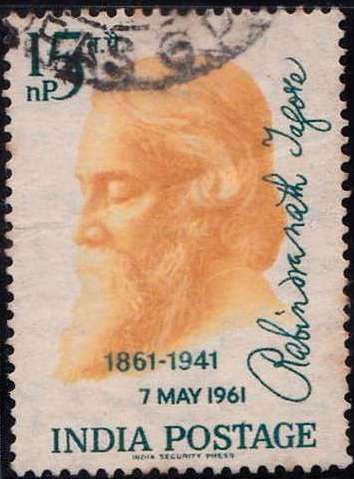
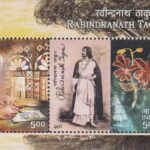
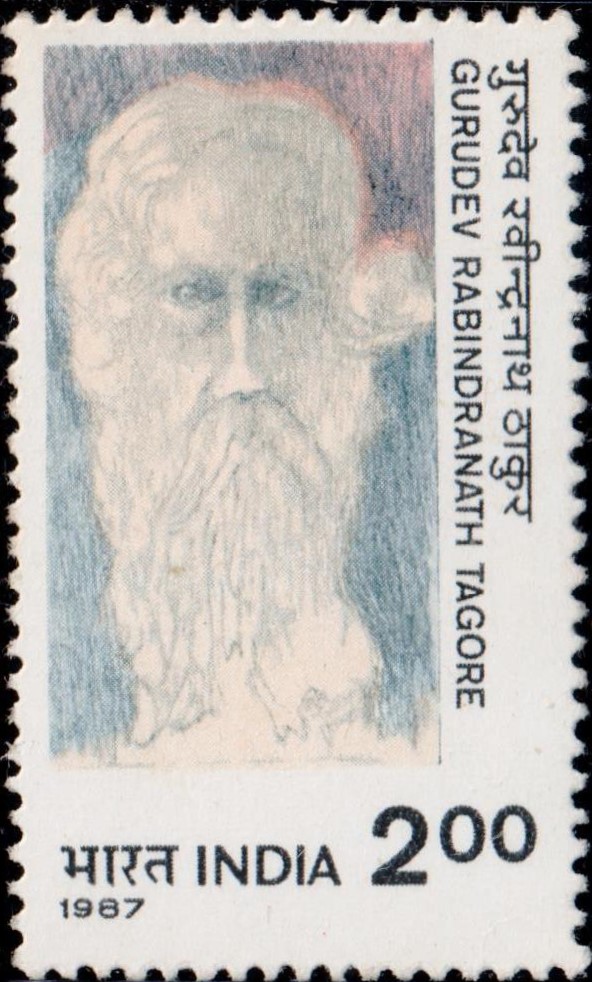
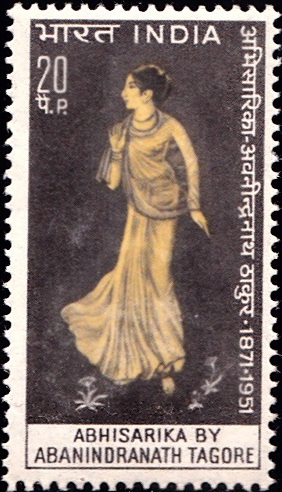
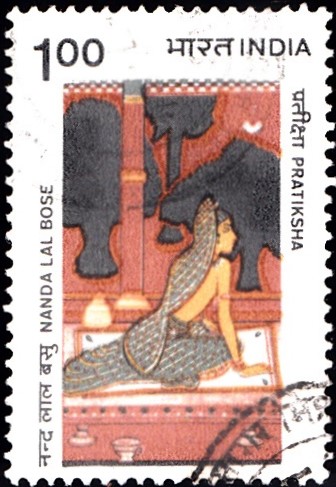
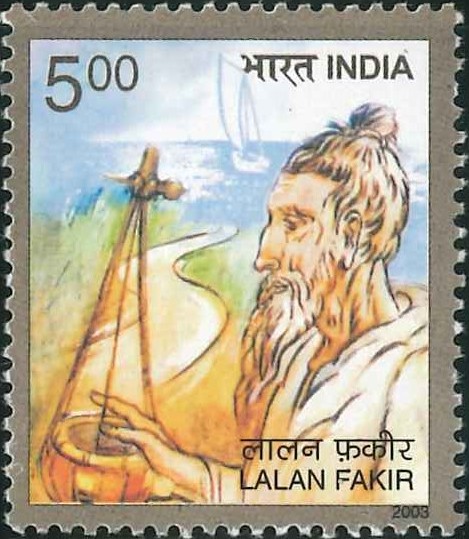
What is the present value of the above commorative First Day Cover Today…
[…] art of the highest order that reflects the vitality, complexity and unfolding patterns of modern and contemporary art in India. It sustains a library, art collection, archives, conservation […]